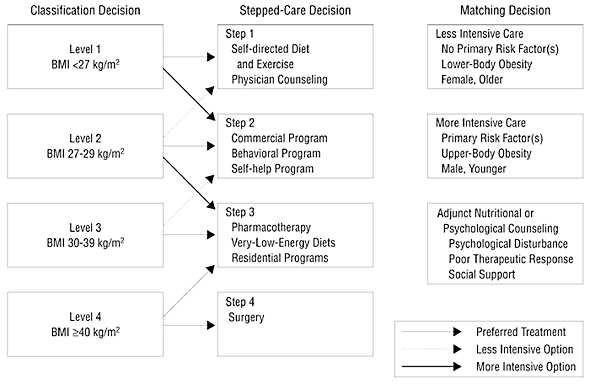
Figure 3. A conceptual scheme showing a 3-stage process in selecting a treatment for an individual. The first step, the classification decision, divides people into 4 levels on the basis of body mass index (BMI). The level dictates which of 4 steps would be reasonable in the second stage, the stepped-care decision. This indicates that the least intensive, costly, and risky approach will be used from among treatment alternatives. The third stage, the matching decision, is used to make the final selection of a program and is based on an assessment of the patient's need for weight reduction, as judged by the presence of comorbid conditions or other risk factors. In addition, patients with significant psychological problems and/or an eating disorder may require adjunct care. Reprinted with permission of Thomas A. Wadden and Kelly D. Brownell.